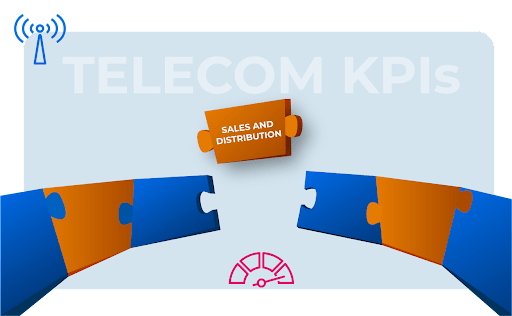In the telecom industry, we still talk about two things: the unrealised potential of using data-driven insights and the importance of collaboration across telecom ecosystems. This says a lot about the challenges that telecom companies face in their digital transformation journey.
Implementation of new and improved collaboration models in telecom distribution chains is crucial, especially since there is greater risk of undermining digitization processes if the company is operating in silos.
Looking from the outside in, it’s easy to see a telecom company as a single unit with a cogent sales and distribution strategy streaming through it, however, more often than not, it operates under multiple sub-strategies with varied KPIs and different levels of digital enablement.

How Does the Absence of a Centralized System Impact your Business?
The lack of alignment within business processes and a unified platform for centralized management of operations slows the pace of digitization within telecom companies. In many cases, telecom CIO’s and managers do not have access to real time data or a system that converges all business functions and the data derived from them.
As a result, operating companies are more likely to face hindrance in making informed and timely decisions. Not only do cross-functional silos slow down the initiatives targeted towards digital transformation, it is also a major obstacle for harnessing the value of the vast amount of insightful data that a typical telecom company gathers.

What Critical Success Factors will Make or Break Telecoms in 2022?
The telecom industry is getting increasingly fast-paced and to succeed within it, companies need to reshape and consolidate their distribution network to diversify revenue streams and unlock new growth verticals.
Additionally, telcos need to be equipped to manage profit centers to lower the cost of marginal revenue and to manage cost centers in a lean and efficient way to reduce cost, without impacting business performance.
Another crucial next step includes centralizing control over the sales and distribution network to improve visibility till the last mile.
But most importantly, the ultimate goal is to improve digital growth and increase digital engagement to ensure retail enablement across all customer touchpoints and boost revenue in the changing industry landscape.
How can Consolidating Sales & Distribution help Telecoms meet KPIs?
With all this talk about the importance of consolidated distribution systems, let’s get down to what it really helps you achieve: ability to seamlessly sell through multiple channels and ultimately, optimize revenue generation.
However, handling all aspects of a rather complex distribution chain can become difficult and you might need a high-caliber solution that brings all your sales and distribution in one place. Doing this will make you more capable of offering end-to-end enablement across all stages of the telecom reseller/subscriber user journey.
In addition to this, data-driven planning is key for driving efficiency in day to day operations. With data coming in from all these places, it can be difficult to make sense of it. The consolidation will also solve for this by making your unified solution the hub of all the critical information you need to make agile decisions.

Keeping in consideration the emerging market trends, telecom CIOs also need to turn their focus towards digitization of S&D networks for increased efficiency and control. With the help of a digital distribution network, it will be easier for telcos to deliver consistent message and product offerings at all channels and present a united front for consumers. By unifying customer experience across the board in this way, telecom CIOs can quickly lead their companies towards sales growth and OPEX optimization.
Based on this consistent need seen across the industry, it is evident that there is profound value in implementing digitization strategies that support the entire sales and distribution chain. Some of the most important and relevant capabilities that a digital, unified platform would offer to support the Telecom S&D business include:
- Meeting future needs for automation by ensuring that the consolidated and digital system is equipped to integrate with emerging technologies
- Optimizing revenue by enabling telecoms to expand into new and diversified revenue streams and growth verticals
- Driving business innovation by building a strong digital ecosystem
- Enhancing customer experiences necessary to scale growth & profitability through data-driven insights, and personalized services
Final Thoughts
Through a consolidated, digital network, synergy and consistency flows across the entire distribution chain enabling telecom companies to have last-mile visibility into their business operations which can ultimately drive their business goals and facilitate data-driven decision making.
Having gone through the pandemic induced restrictions, operating companies have been quick to prioritize and accelerate digitization of Sales and Distribution. This, accompanied with increased automation, will allow telecoms to have more centralized control and visibility into channel activities.
So we can safely say that by harnessing the power of digitization and automation, particularly through business intelligence, telecoms can further enhance customer and retailer experiences by using personalized data sets for resellers and subscribers. This is not only more likely to boost growth and generate more revenue for operating companies, but will also give them a leg up on digital engagement with retailers and subscribers which will be make or break come 2022.


